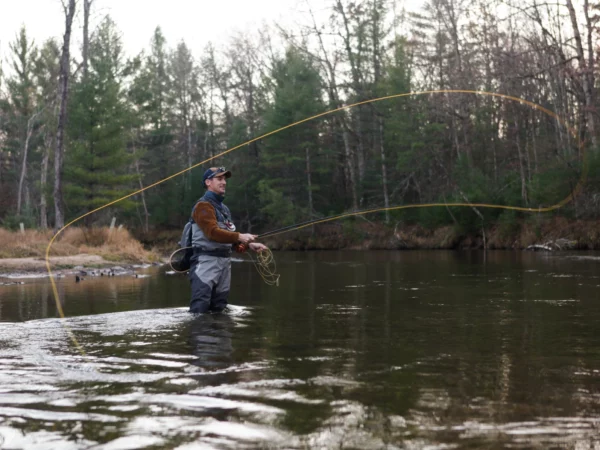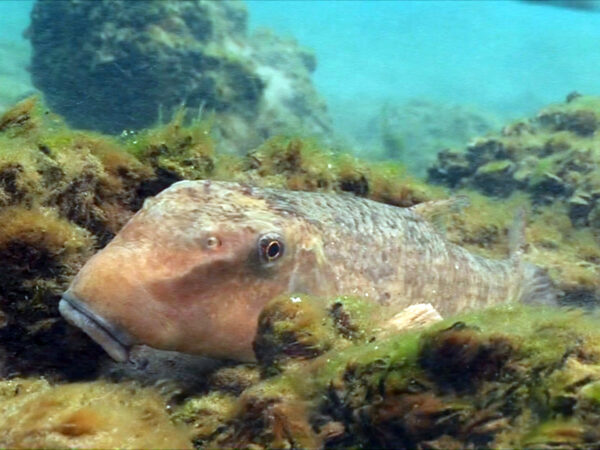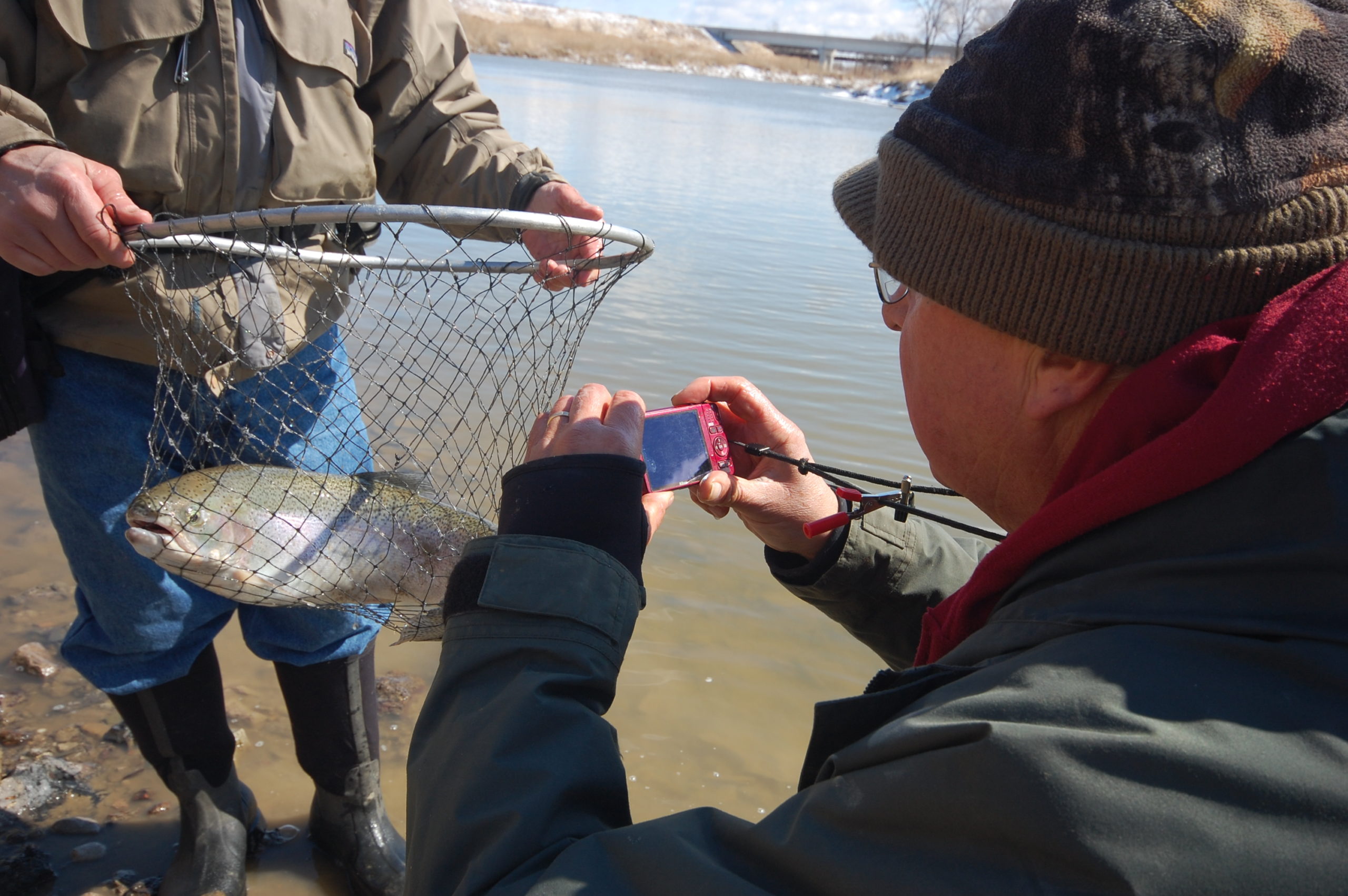
Summer is hands-down the most popular fishing season on the Great Lakes because people on vacation want to fish.
But Great Lakes fishing is a year-round sport. With a range of fish that offer a tasty meal, a challenge to land or both, anglers can have 365 days of fun on the lakes and their tributaries.
It’s hard to pin down the top fish due to the number of species, anglers and locations, but Great Lakes Now narrowed down a list of 10 finned quarry that will make for a good time catching – or even just attempting to catch.
1) Walleye
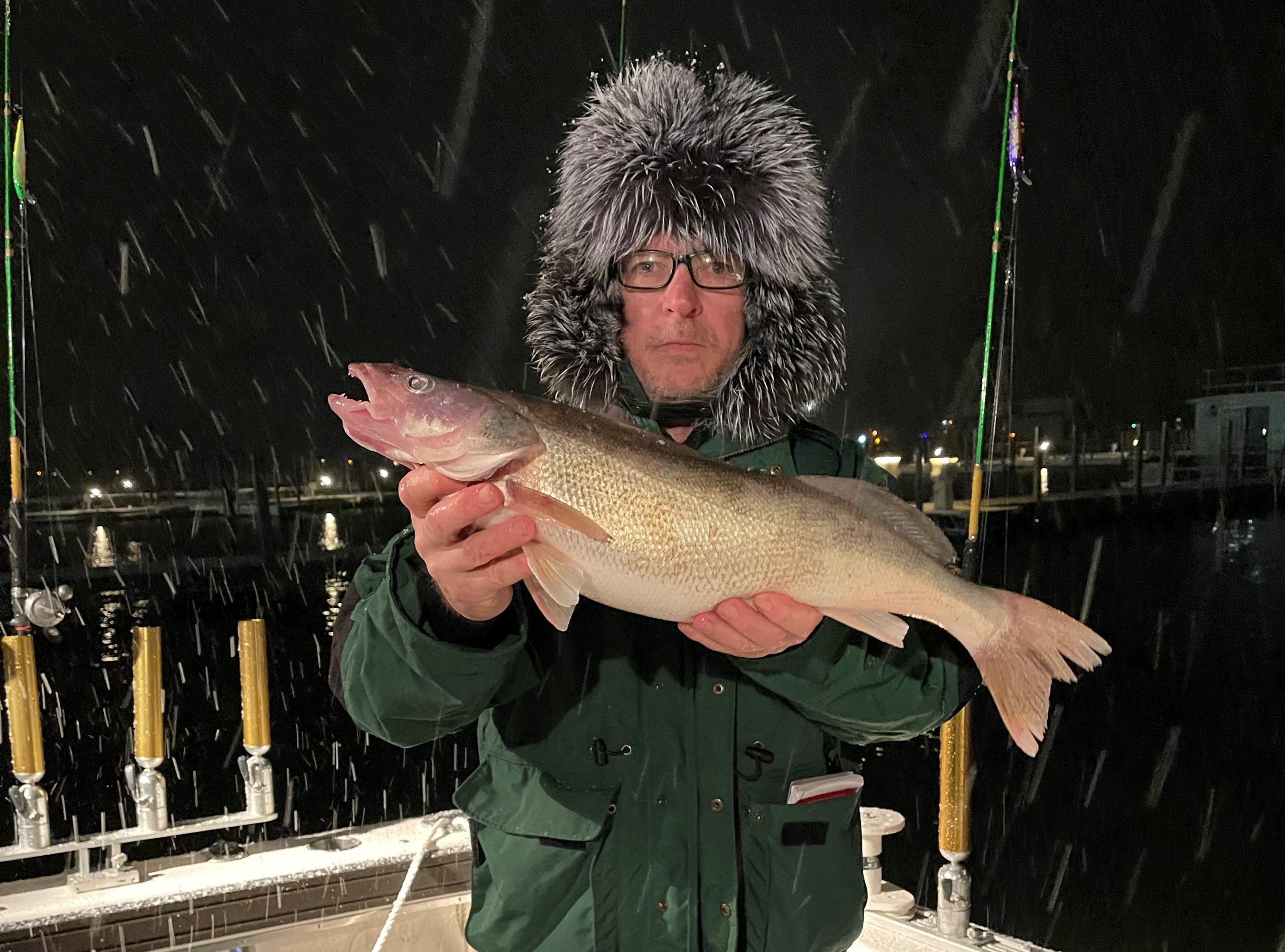
Walleye can be taken all year long on Lake Erie, even the end of November at night in the snow. (Photo courtesy of Mark Cahlik)
This is the go-to Great Lakes fish, especially in Lake Erie.
It’s abundant, grows to 30 inches or better, tastes great and is easy to target with a variety of techniques. Ice anglers jig for them just like early spring anglers. In Lake Erie, early spring river spawns are fan favorites because anyone can access them on the Maumee and Sandusky rivers either wading into water or casting from banks. It’s the same anywhere they spawn in shallows or streams.
While targeted from boats anywhere on the lake year round, walleye also offer great ice fishing action when solid, safe ice is available.
“Walleye fishing in Lake Erie is currently at an all-time high, some of the highest catch rates we have ever seen,” said Mark Haffley, Pennsylvania Fish and Boat Commission biologist. “With large year-classes in the last few years, walleye fishing will be good for quite some time.”
Walleye are considered one of the primary economic drivers for Lake Erie tourism, drawing hundreds of thousands of anglers every year from neighboring states and farther like the Dakotas, Nebraska, Wisconsin and Colorado.
2) Yellow perch
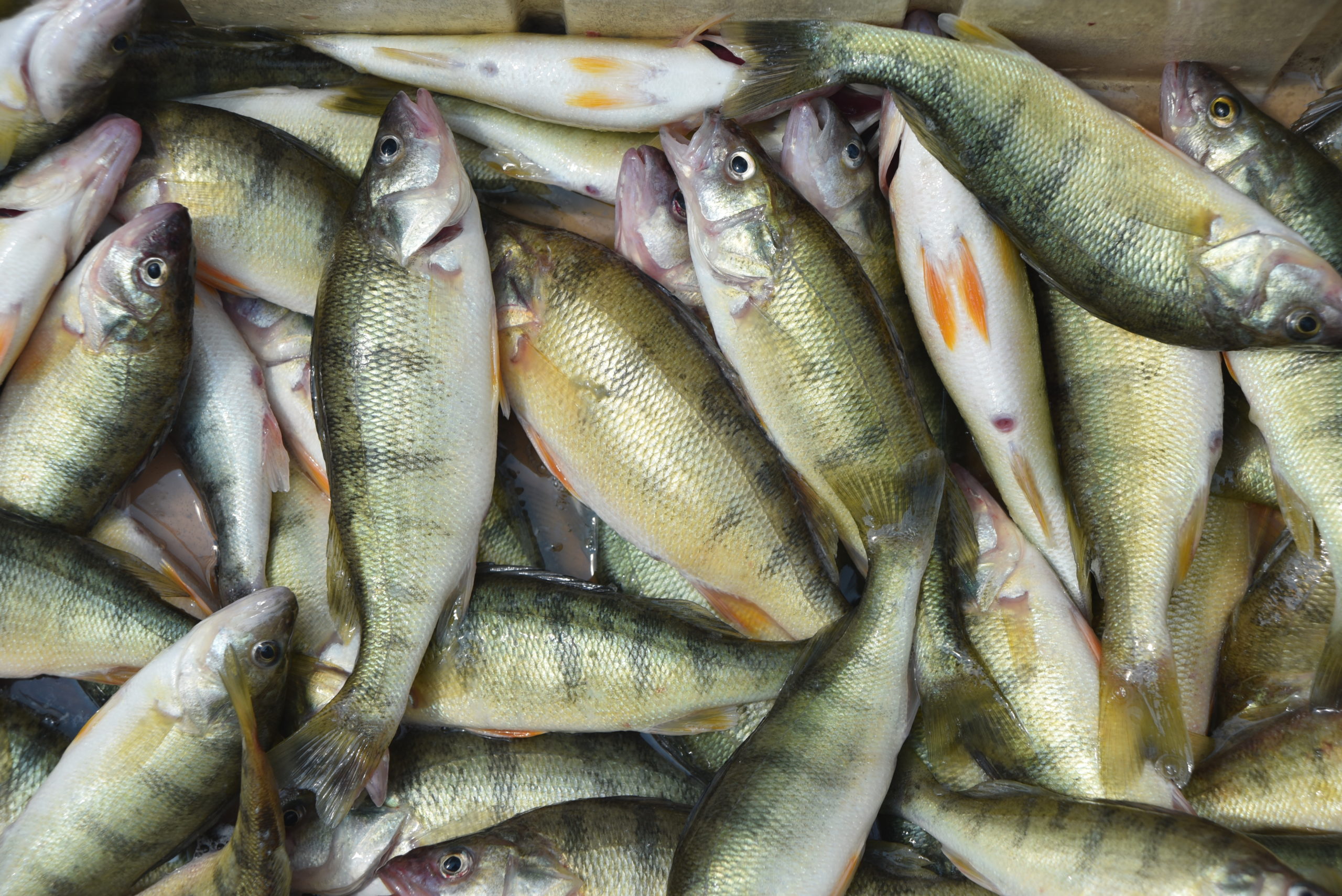
A cooler full of Lake Erie yellow perch. (Photo Credit: James Proffitt/Great Lakes Now)
These tasty little walleye cousins, often targeted by commercial fishing operations, are equally prized among Great Lakes anglers. One of the best attributes of yellow perch is they’re usually easy to catch – an especially good choice for kids and novice anglers.
They are found in all the Great Lakes and are popular in Lake St. Clair, Saginaw Bay, Lake Erie and Green Bay. Eastern Lake Erie boasts plenty of “jumbo” perch, considered prize catches when they reach about 11 inches or more.
In most places, daily yellow perch limits can exceed 30 fish per angler. In 2021, New York’s average Lake Erie yellow perch creel average was a whopping 11.7 inches.
3) Smallmouth and largemouth bass

Largemouth bass are a hot commodity in Lake Erie and the St. Clair River. (Photo Credit: James Proffitt/Great Lakes Now)
These fish are most often found in shallower areas including inlets, bays, marinas, weed beds and any underwater structure. Often the target of professional anglers, both smallmouth and largemouth bass are known for their fight, including their top-of-water antics once hooked. Big-money bass tournaments occur all over the Great Lakes, and before cable television and the internet came along, were the staple of old-school Saturday morning fishing shows.
Virtually all bass anglers practice catch-and-release fishing, rarely keeping any bass.
In 2010 Ohio wildlife officers, acting on a tip from smallmouth anglers, tracked six men from Georgia and Tennessee engaging in serious over-bagging of smallmouth in Lake Erie. When they drove off the Kelleys Island Ferry, they were stopped. In the end they were all cited, and the Ohio Department of Natural Resources seized two chest freezers filled with fish and three fishing boats with trailers.
4) Salmon (coho, chinook, Atlantic, pink)
This family of behemoths offer something more akin to deep-sea fishing rather than inland-lake fishing due to their size and fight. Pink salmon are the smallest and are a frequent target of fly anglers, with the Michigan record standing at 8.56 pounds. Coho and Atlantic salmon commonly exceed 20 pounds and chinook (also called king) 30 pounds. Michigan’s record chinook stands at 47.86 pounds, with coho standing at 30.56 pounds.
“Normally here it’s kings, they’re looking for chinook,” said Nick Jagow of Crazy Tails Sportfishing by Lake Ontario. “There’s also a ton of coho, they’re easy to catch and there’s an abundance of them in the lake, about an 8-pound average.”
While salmon species have had a spotty history in the Great Lakes, permanent coho and chinook populations were established between the mid- to late 1960s when more than 20 million were stocked.
5) Steelhead salmon (rainbow trout)
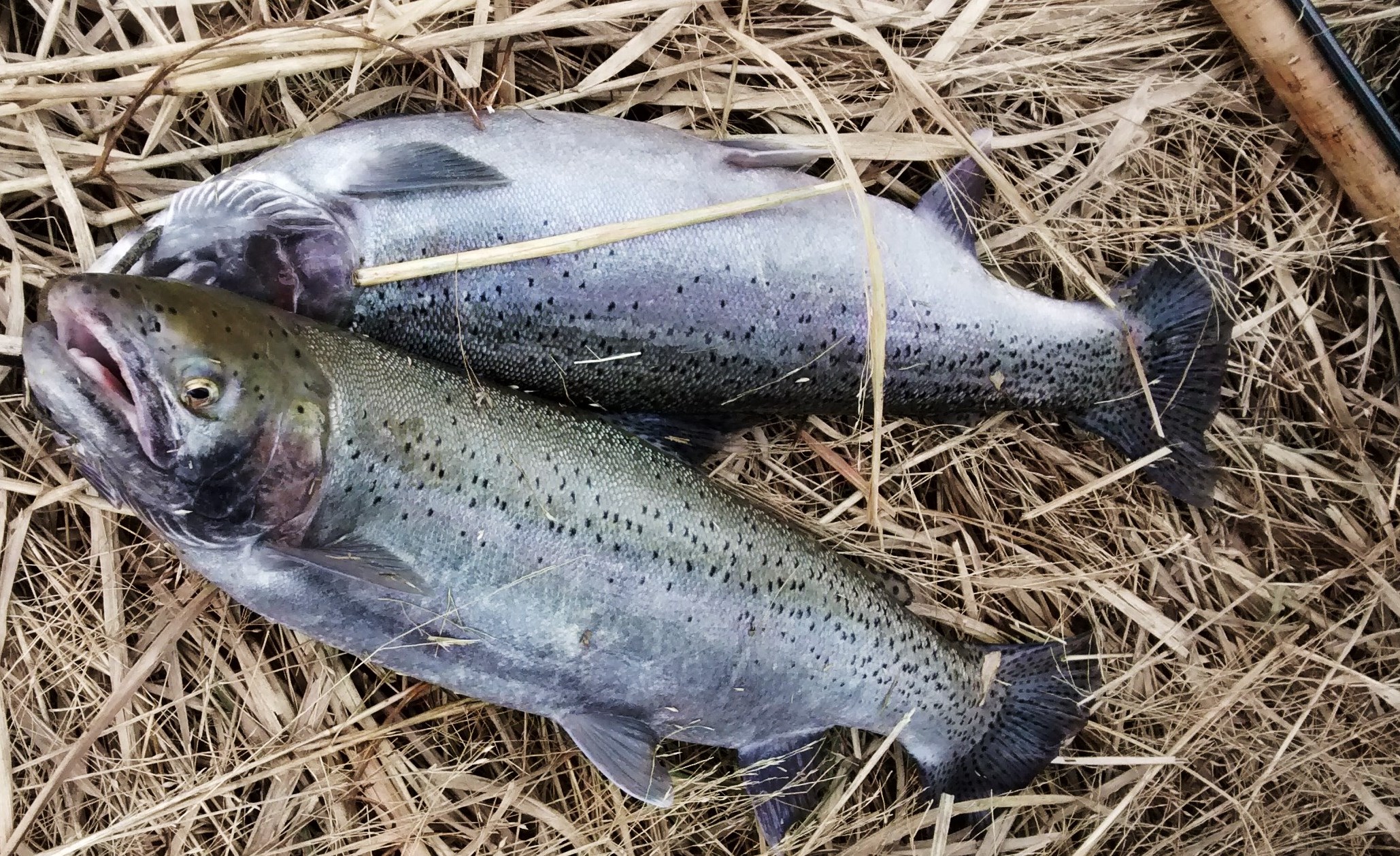
A steelhead limit lying on a bed of reeds on Ohio’s Grand River. (Photo Credit: James Proffitt/Great Lakes Now)
The two names refer to the same fish, but they live different lifestyles depending on where they’re born (or stocked). Steelhead spend much of their time out at “sea” – in this case the Great Lakes – and enter rivers and streams to spawn in the spring. Rainbow trout spend their entire time in inland waters. But both provide great action for anglers who catch them on the lakes and in tributaries or nearby inland waters.
Steelhead are mostly sought after by fly anglers in the autumn, occasionally in winter and definitely in early spring.
While there is limited natural reproduction of these fish in Great Lakes rivers and streams, there are robust rearing and stocking programs by fisheries managers. These beautiful fish, with iridescent pink sides speckled with dots, also taste great however prepared.
They’re also a great barter item. According to Andy Jarrett, who oversees Ohio’s Castalia Fish Hatchery, they send tiny channel catfish to Michigan fisheries managers, who return the favor with steelhead eggs.
6) Panfish (bluegill, crappie, pumpkinseed)
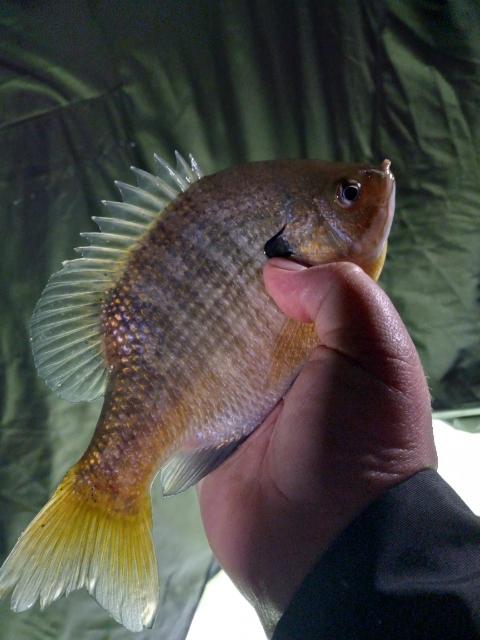
Bluegill this size are sometimes called slabs. (Photo courtesy of Brad Miller)
These fish don’t spend a lot of time on the radar when it comes to the Great Lakes, though they are the stars of near-shore ice fishing excursions and spring angling in harbors, marinas, inlets and protected shallows where they prosper. Panfish pulled through the ice are considered some of the best tasting fish and in many cases can be taken by the dozens on a good day.
“Definitely not just for kids,” said Captain Brad Miller of Reef Bobber Charters by Lake Erie. “It’s been very productive this year, and they’re very accessible. You can literally go out with a hammer and break the ice and catch them. We’ve had plenty of them over 9 inches on East Harbor, and my buddy had one just shy of 11 inches.”
In some Great Lakes locations, the creel limit on these is unrestricted while other sites often have high limits, such as 25 or 50 fish per day per person.
7) Lake trout
After being fished nearly to extirpation in the Great Lakes by commercial fishing operators in the mid-1900s and falling prey to parasitic sea lamprey, lake trout are back.
This big fish seeks cooler, deeper waters. It’s not uncommon for anglers to land fish 20 pounds or more. Stocking programs in all five lakes have brought the once-popular native fish back, with natural reproduction bolstering the efforts of fisheries managers in some locations. In 2021 New York fisheries biologists discovered the first wild lake trout fry in Lake Erie in more than 60 years.
Michigan’s lake trout record stands at a massive 61.5 pounds.
8) Lake sturgeon
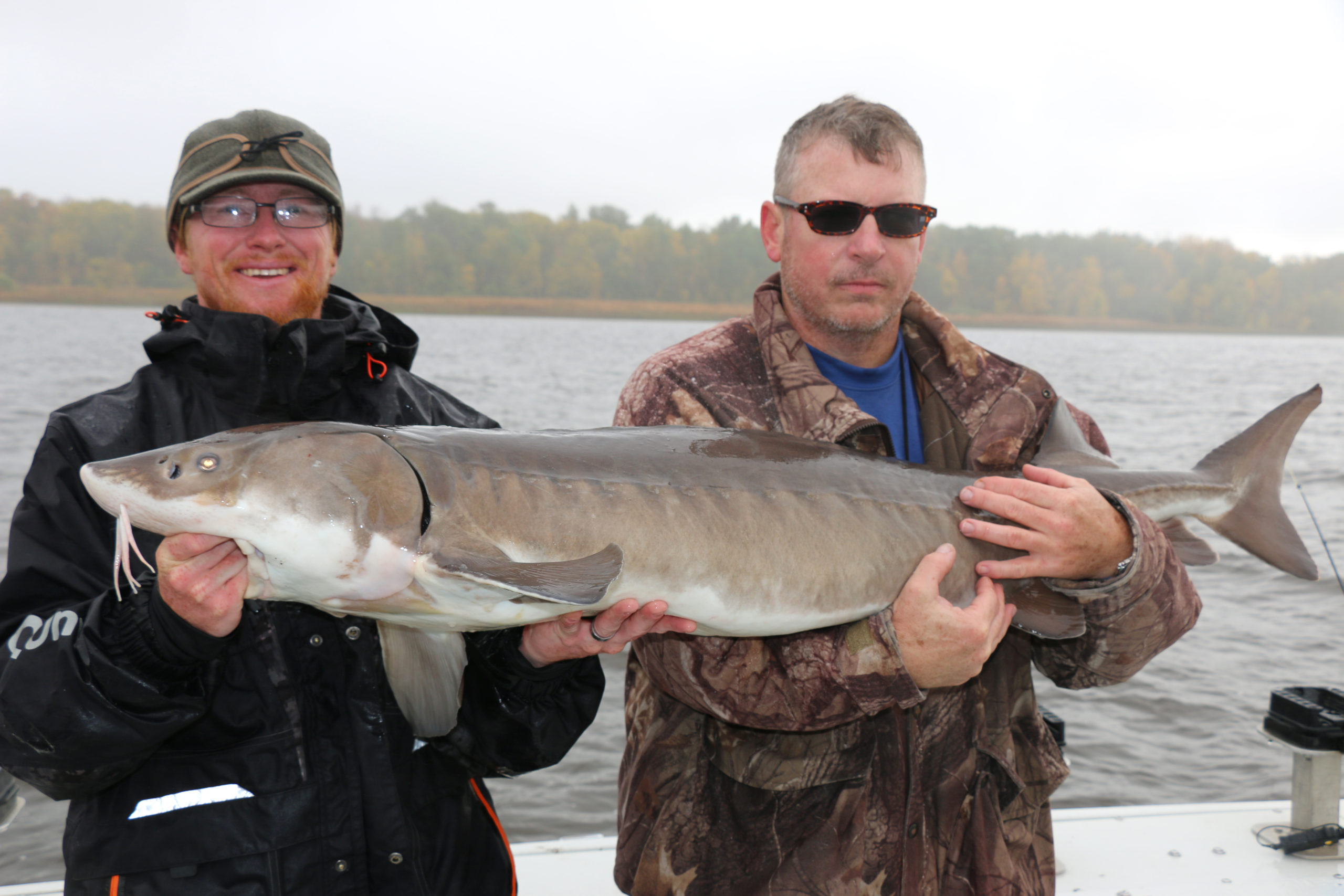
Capt. West Harder and James Proffitt hold a 60-inch lake sturgeon before releasing it. (Courtesy photo)
These prehistoric fish, which can live to be a century or more and grow to lengths of 6 feet or better, have been the focus of restoration efforts in the Great Lakes region in recent years. While they were extirpated from Lake Erie during the last century, thousands of fingerlings per year are being raised and released.
There are very specific regulations regarding lake sturgeon that differ from state to state and even from one body of water to the next within a state. Currently, Great Lakes anglers wishing to land a lake sturgeon should spend time on Lake St. Clair and the St. Clair River, where Sturgeon for Tomorrow has helped foster an active angling and conservation community. Those waters host a massive population of the largest fish in the Great Lakes.
Anglers often use the tried-and-true method for sturgeon: a big gob of old-fashioned nightcrawlers on a treble hook.
The Black Lake sturgeon spearing season in Michigan usually last about two to three hours with an expected total harvest, in 2022, of six fish.
9) Muskellunge

Muskie lure are really, really big. (Photo Credit: James Proffitt/Great Lakes Now)
This massive predator is a ferocious and prized catch. Once called “the fish of 1,000 casts” due to the difficulty of attracting even a single strike, it’s become even more popular with the advent of multi-rod trolling techniques.
Muskie ambush their prey, often lurking in cover near shallow waters. Most muskie anglers practice catch-and-release, though occasionally keep a fish for mounting. In the Great Lakes they can exceed 50 inches. Muskie are at the top of the food chain for Great Lakes fish, with adults falling prey only to anglers and an occasional eagle.
“Lake St. Clair is renowned for its smallmouth and muskellunge populations,” said Jim Francis, the Lake Erie basin coordinator for the Michigan Department of Natural Resources. “Professional bass anglers regularly rank it at the top of their list of best waters to fish and it regularly hosts national championships. Similarly, the muskie fishery is renowned, best known for its high catch rates with fish that can exceed 50 inches.”
Muskie lures resemble bass and walleye lures on steroids, often measuring 10 inches or longer and can cost $30 or more.
10) White Bass
Some anglers consider this fish a nuisance while others can’t get enough. This river and stream spawner tends to enter spawning grounds in spring just as walleye are leaving and offer non-stop action. Some anglers come from other states to spend a week loading up coolers with fresh white bass filets. Creel limits vary by state and location, though they can be high or unlimited.
Many anglers consider white bass a poor-tasting fish – but many others don’t. The internet is loaded with recipes for white bass smoked, blackened, fried, baked and grilled.
Catch more news at Great Lakes Now:
2022 Perch Outlook: Ohio hatch results not so great
Walleye Windfall: Lake Erie bait and tackle is big small business
Featured image: Outdoor writer Paul Liikala takes a snapshot of a 30-inch steelhead just landed on the Grand River. It was gently released moments later. (Photo Credit: James Proffitt/Great Lakes Now)
2 Comments
-
If Lake sturgeon can live for years, how does it fare in taste? Would it be smellier and funkier compared to other fresh fishes
-
I’m still chasing my first sturgeon!


